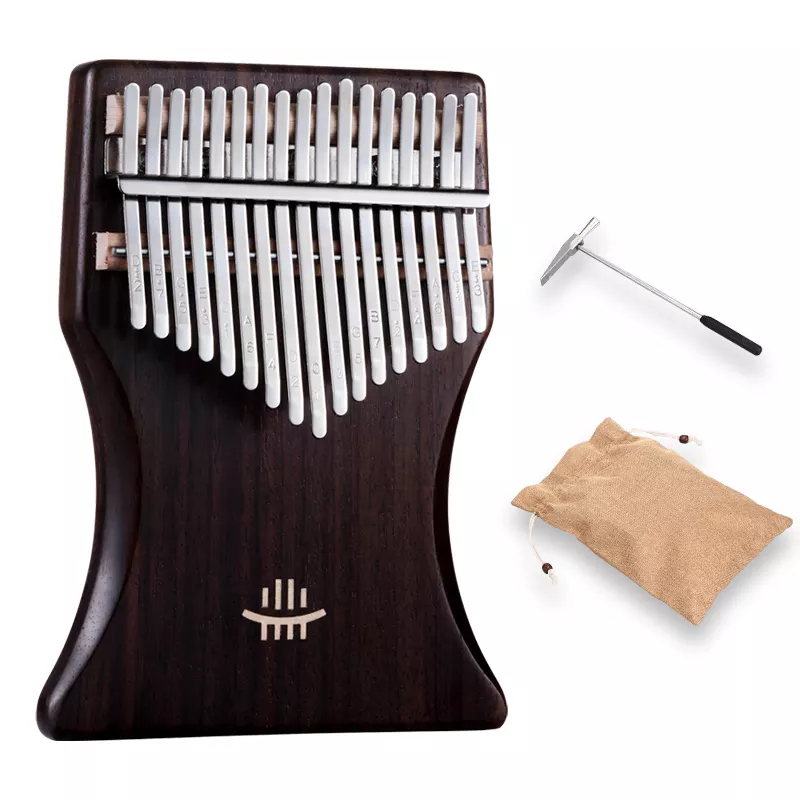
Flat Kalimba
Feature
The Flat Kalimba is an instrument that has been around for centuries, but its popularity is still growing in today’s world. This African-inspired instrument is popular among musicians of all skill levels and genres. Its unique sound, portability, and affordability make it a great option for those looking to expand their musical range.
The Flat Kalimba consists of metal plates mounted on a wooden box. It can be tuned by adjusting the metal tines with either a tuning hammer or Allen key. Each tine produces a different note when plucked with the thumb; this allows players to create melodies and chords just like other string instruments. The sound produced is often described as “hauntingly beautiful” due to its unique tone quality.
MOQ
5 pcs
- 40+ Years of Experience
- Personalized move planning
- Full-value Damage protection
- 24/7 Availability
Quality of the Flat Kalimba
item | value |
Place of Origin | China |
Brand Name | Dorhymi |
Model Number | KA |
Drum Heads Material | Sapele/Rosewood |
Drum Chamber Material | Sapele/Rosewood |
Size | 18*14*2cm |
MOQ | 1 |
Weight | 0.75KG(G.W.) |
Keys material | New type of mineral keys |
Usage | Musical Instrument |
Inner box | 24*21*9cm |

Application
Its traditional African roots have made this instrument a great choice for those looking to explore new sounds and textures. It consists of a series of metal keys mounted onto an aluminum body and can be used to create rich tones with an array of techniques.
The flat kalimba’s portability makes it attractive for use in live performances as well as recording sessions, allowing players to take the instrument wherever they go. Its simple design also allows for creative applications such as tapping the tines directly onto surfaces or using other objects like coins or sticks to create unique percussive effects. By varying the intensity and speed of plucking, different harmonic patterns can be achieved which are ideal for soundtracks, background music, or even solo improvisation.
How Do We Make Best Flat Kalimba
In any organization or company, there are some procedures that members need to follow when producing or manufacturing an item. We have flow charted all of the processes our handpan follows before being completed.

Dorhymi is a leader in the production of the traditional African instrument, known as the flat kalimba. This ancient instrument is used to produce melodic sounds, which have been enjoyed for centuries all around the world. The process of producing a flat kalimba involves careful crafting by experienced artisans.
The first step in producing a flat kalimba is selecting and shaping the wood. The artisans use different types of woods such as mahogany or cedar that provide resonance and strength to each instrument. After cutting and shaping it, they sand down the edges for smoothness before drilling small holes into it for attaching keys.
Directly Supply Chain
We prioritize a streamlined process and flexible operations. We’ll make sure to deliver your products at the appointed time and with the specified specifications.
Flexible financial Policy
We promise no pressure marketing campaign, our financial policy is customer-friendly, and we will work with you to establish your financial goals.
Guaranteed logistics packaging
All our logistics processes are thoroughly streamlined and adaptable. We will make a point to deliver at the time and venue as agreed upon. Our packaging has been repeatedly tested for high space utilization and safety
Request A Free Quote / Product Catalog
Sound healer say
Dorhymi often collects input from sound healers, music educators on social media to improve the details of the production process!

Codey Joyner
Sound healer
It wasn’t until 2022 that I found this site for sound healers and music lovers, I would say here anyone can get what you want, I can share more of my experiences with Shann, from here I also learned about the factory production process, that was fun!

Eren Hill
handpan player
I love handpan, it has made a lot of difference in my life, as a hobby and as a business, and the handpan Dorhymi supplies is unique.

Emanuel Sadler
music educator
Music is a common topic of communication for people all over the world, and it’s clear that Shann and I agree. We have a lot of similar experiences. Follow the article each week to share.
Opportunity to make suggestions and share your work
You can contact us by email to leave your valuable comments or share your work for more exposure, all the works will be shown in the gallery once admitted
You ask, we answer
Dorhymi is dedicated to summarize all the knowledge about music instruments. For more sharing, please follow our blog!
The answer is yes! The kalimba can be tuned to either sharps or flats depending on the player’s preference. The tuning of the instrument is done by adjusting the length of each tine individually with a small wrench. Once they have been adjusted, they will produce higher or lower pitches depending on their length. This means that players are free to choose between different scales and traditional modes in order to create unique sounds and melodies.
Kalimba is an ancient African instrument that has become popular around the world. It is easy to learn and produces beautiful music when played correctly. Knowing how to play flats and sharps on a kalimba can take your playing to the next level, allowing you to create more complex melodies and harmonies. Here’s an introduction to flats and sharps on kalimba:
Flats are notes that are lower than the basic note, while sharps are notes that are higher than the basic note. On a kalimba, these notes can be identified by looking for small black dots or lines below or above each tine.
In the market, two of the most common types of kalimbas are wooden and acrylic versions. But which one offers better sound and playability?
When it comes to acoustic properties, wooden kalimbas tend to have a warmer and fuller tone compared to acrylic models. Wooden instruments also resonate better and for longer periods of time, making them ideal for playing complex pieces with multiple layers of sound. On the other hand, acrylic kalimbas have a brighter and more dynamic tone that can be great for adding subtle nuances or experimental elements into your music.
Overall, there is no definitive answer as both kinds of kalimbas offer different benefits; it all comes down to personal preference.
The answer depends on how comfortable you are with instruments. If you’re just starting out with playing a kalimba, you may experience some mild discomfort as your hands adjust to the new movements and finger positions necessary to play it properly. While it shouldn’t cause any long term harm or damage, having sore fingers initially is not uncommon. It’s important to take regular breaks while learning and practicing so that your muscles can relax and limit possible injury.
Get a free quote now!
Super simple, tell us the required size, tone, quantity and we will quote within a day

